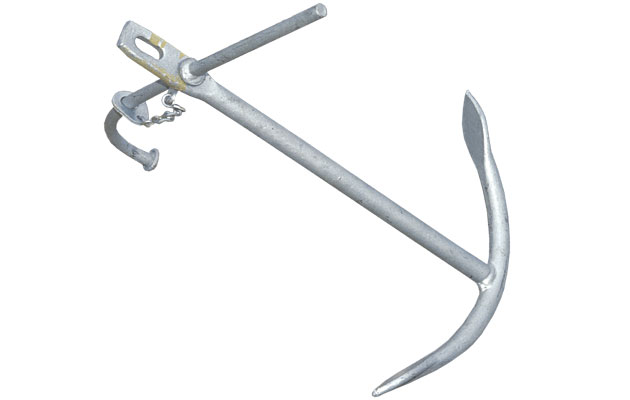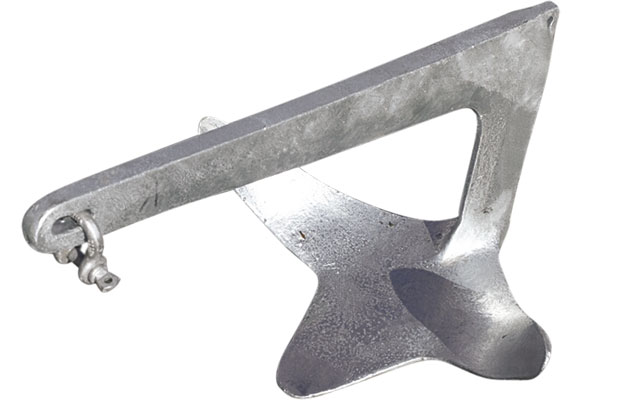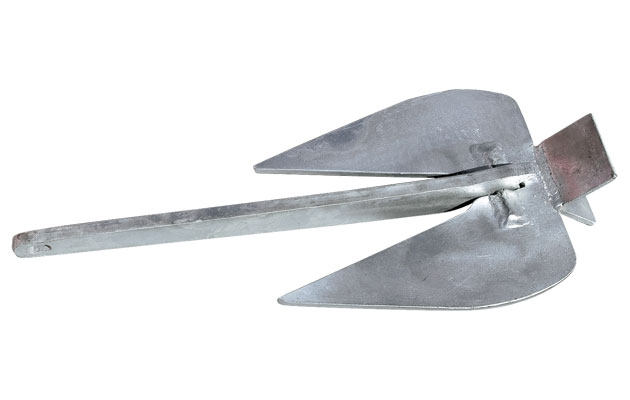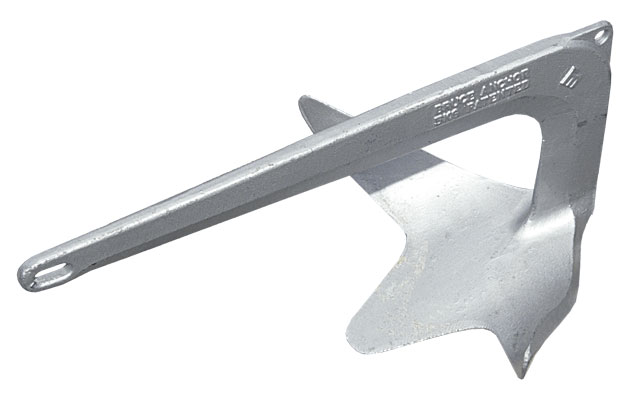When it comes to choosing between different types of anchor, there's a variety of factors to consider. Vyv Cox explains their strengths and weaknesses
Anchors have evolved dramatically over the decades. There is now a selection of anchor types designed to suit a variety of scenarios. Choosing the right anchor is crucial in terms of safety and how they will perform on where you plan on dropping. We’ve rounded up each type of anchor whether that be the traditional ‘Fisherman’ or the suite of ‘New generation’ anchors which have revolutionised anchors and scored extremely well in holding tests. Whatever anchor you choose, beware of cheap unbranded copies. We’ve also covered below what you need to keep an eye out for in regards to spotting a copy, these pose a risk due to rarely having the precise geometry needed to maximise holding power, some are also badly cast and therefore far weaker than their original design.
Different types of anchor – pros and cons
Fisherman
The Fisherman holds well on rock and weed, but its tiny flukes are likely to drag on any other bottom, ruling it out in most anchorages. Fishermen anchor where the fish are, over reefs and rocky outcrops. It isn’t the end of the world if their anchor drags. They simply re-anchor, or pack up and go home. These anchors are difficult to handle and need to be extremely heavy to provide adequate holding. Most of us don’t anchor overnight on rocks or weed, so there is really no advantage in carrying one.
Pros:
- Holds well on rock and weed
Cons:
- Dated
- Difficult to handle
- Need to be extremely heavy to provide adequate holding
Plough
Like their agricultural namesake, CQR, Delta and Kobra II anchors drag when pulled hard enough, tilling the sea bed. The actual load at which they drag varies. My Delta once dragged badly in soft mud, admittedly in extreme gusting winds. Yachting Monthly’s 2006 anchor test is widely held to be one of the most realistic. It placed new-generation anchors firmly at the top for holding, Delta in the middle, CQR and Bruce firmly at the bottom. So why are the latter two so popular? Almost all tests compare 25lb (11kg) anchors, whereas world-girdling yachts carry CQRs of 55lb (25kg) or more. Anchors whose tip loading is not maximised need lots of weight to set. The CQR’s tip loading is 12-16% of total weight. Deltas (and presumably the very similar Kobra II) have good tip loading, about 28%, helping them to set easily but ultimately dragging at high loads.
Pros:
- Have good tip loading – set easily
Cons:
- Drag at high loads
- Don’t perform as well for holding as New Generation
Copies
CQR and Bruce copies have been around for years; now there are Delta knock-offs, too. Copies of new-generation anchors will surely follow. In some cases it takes only a cursory inspection to see that copies are crudely made, welded in ways that an amateur would be ashamed of and with minimal galvanising. Cast types are more difficult to assess by eye but they’re likely made from cast iron, which is brittle and has very low tensile strength. You’ll find photos of snapped ones on the Internet. There are cast iron versions of the genuine CQR, recognised by the weight marked in lbs, ending in ½. These also tend to be brittle and will snap if impacted hard enough.
Cons:
- Crudely made
- Brittle, low strength, easily snapped
- Dangerous
Flat anchors
Danforth, Britany, FOB, Fortress and Guardian anchors have a large surface area for their weight, thus they hold extremely well in soft-to-medium bottoms. Setting on these bottoms is also good, thanks to sharp fluke tips, at an optimum angle for penetration. On hard bottoms such as packed sand and shingle they may tend to skid without setting. Their only drawback: they tend not to reset when the tide or wind changes the direction of pull. A flat anchor in lightweight aluminium is thus the ideal kedge, but few choose them as a bower anchor.
Pros:
- Large surface area, hold extremely well soft-medium
- Good setting due to sharp fluke tips
Cons:
- Skid on hard bottoms
- Tend not to reset during wind/tide changes
Claw
The genuine Bruce has not been made for very many years. It was made from cast steel, a strong and tough material. A huge number of copies have been produced, often in low-grade, brittle and weak materials. The original Bruce had precise fluke angles, unlike many copies. The genuine item sets and holds well in soft-to-medium bottoms, is said to hold on rock, but its long leading edge struggles to cut through weed. Again, big, heavy ones work far better than small ones.
Pros:
- Strong and tough
- Precise fluke angles
- Sets and holds well in soft-to-medium bottoms
Cons:
- Rare, out of circulation for many years
- Long leading-edge struggles to cut through weed
New generation

New generation anchors have flat or concave flukes and heavily weighted tips. This Spade has a tip loading of 47%
This category includes the Bügel, Manson Supreme, Rocna, Sarca and Spade. The first of these, the Bügel, has a flat, thick fluke with relatively low surface area, a plate shank and a roll bar. The design makes it easy and relatively cheap to manufacture although ultimately, at wind speeds probably never encountered by the vast majority of yachts, its holding may be slightly less good.
The Manson and Rocna are broadly similar, with tip loadings around 35% of total weight, plate shanks and roll bars. The Spade does not have a roll bar. Its tip loading is the highest of all, at 47% of its overall weight. The design is complex, with a hollow shank that separates from the fluke for stowage. The setting and holding of all of these designs is excellent; the Spade in particular has won many anchor tests. The Sarca achieved very high holding in recent tests, but it’s scarce in the UK.
Pros:
- High tip-loading
- Award-winning anchor test result
- Easy and cheap to manufacture
Cons:
- Holding may be slightly less good
- Sarca brand is scarce in the UK
For a full lowdown on our recommendations when it comes to ‘New generation’ anchors, check out our feature Best anchors: 8 new generation designs suitable for every boat
Enjoyed reading this?
A subscription to Yachting Monthly magazine costs around 40% less than the cover price.
Print and digital editions are available through Magazines Direct – where you can also find the latest deals.
YM is packed with information to help you get the most from your time on the water.
- Take your seamanship to the next level with tips, advice and skills from our experts
- Impartial in-depth reviews of the latest yachts and equipment
- Cruising guides to help you reach those dream destinations
Follow us on Facebook, Twitter and Instagram.









